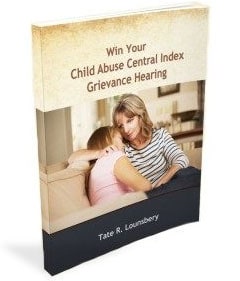Determining the Age of a Bruise
Bruises come in a range of colors, from deep purple, almost black, red, green, or yellow. The appearance of a bruise depends on several factors, like skin tone, the severity of the bruise, and the stage of healing. As individuals recover from injuries, bruises tend to fade and may change color as the skin and capillaries begin to heal.
Accurately determining how old a bruise is based on its color would be a valuable piece of information in a child abuse case. Bruises are the most common injury in abused children, with the majority of physically abused children presenting with bruises. Several bruises on various parts of the body in different stages of healing may suggest prolonged abuse. In the absence of credible explanations, the presence of such bruising is often used as grounds to initiate an investigation into child abuse by child protective services social workers.
Unfortunately, though several studies offer ideas into how to better distinguish the age of a bruise, at present it is difficult to support how to determine the age of a bruise. The primary concern is that examining a bruise results in a subjective interpretation of what the examiner sees. Consequently, these interpretations can differ substantially depending on the perception of the viewer.
Below we’ll review the relevant literature as presented in the following article: S. Maguire, MK Mann, J. Sibert, A. Kemp. Can you age bruises accurately in children? A systematic review. Archives of Disease in Childhood 2005;90:187-189.
How to Determine the Age of a BruiseOne of the significant studies in this field surveyed bruises in 50 children under the age of 18. The children’s skin tone was documented, and different physicians were given the opportunity to classify the injuries as “fresh” if they (the physicians) believed the injuries to have occurred within the last 48 hours, “intermediate” if they believed the injuries they viewed were between 48 hours and seven days old, or “old” if they thought the injuries were sustained more than a week before.
In the bruises that the doctors were presented to examine, the doctors tended to categories bruises that were red, blue or purple colors as “fresh” bruises. Yellow, brown, and green bruises were more commonly labelled by the physicians as “old” bruises that had been healing for at least a week. Still, almost one-third of the “old” bruises had red/blue or purple coloration, and nearly one-quarter of “fresh” bruises had yellow, green, and brown components. Furthermore, the doctors’ “estimates of the exact age of bruises to within 24 hours of their occurrence are inaccurate (40% overall).”
Therefore, this study shed no definitive light on how to determine the age of bruises by coloration. To further cast doubt on this study, its authors concede that the original information reported by the case participants on the age of the bruises may not have been entirely accurate.
Bruise Coloration PatternsThe study was able to determine, however, that not all colors appear in every bruise, and that different colors can appear in the same injury at the same time. Generally, blue, brown, grey, and purple can be seen in a bruise during healing (between days 1-14). Red occurs in injuries that are seven days old or less. Yellow can be visible after one day, and green was apparent in several bruises over two days. Then again, even this information is not entirely helpful: “one child had a blue bruise on the arm and a green/yellow bruise on the leg that were sustained at the same time.” Therefore, “No single characteristic (for example, colour, swelling) or the site of the bruise was significantly correlated with dating accuracy.”
The primary issue with trying to age bruises through coloration is that distinguishing colors is subjective. Also, there is a tremendous variety of colors found throughout the healing stages.
How Doctors Fared in Determining the Age of BruisesIn the study conducted on the 50 children, several emergency pediatricians, physicians, and residents were surveyed on the age of the bruise. Of the groups tapped to determine the age of the bruises in the study, emergency physicians well-versed in child trauma were the most accurate. Even then, however, their educated guesses were only correct about 70% of the time. The other groups of physicians were right about half of the time. Overall, the study found that the likelihood of accurately aging a bruise “to within 24 hours of its occurrence is less than 50%.”
ConclusionAccurately determining the age of a bruise can pinpoint the timeline of injury and prove invaluable in cases of child abuse where bruising is present in children. Unfortunately, that’s not yet able to be done with any degree of certainty, whether the evaluator views the bruise in person or in a photograph.
Based on current research findings, the colors typically visible in bruises are often visible at varying points of the healing process. While specific colors are more common in younger or older injuries, they can also be present in bruises on the aging timeline's opposite side.
Though emergency pediatricians fared better than other observers at determining the age of a bruise, they offered inconsistent results and their observations may be difficult to support. It is simply impossible to determine the age of a bruise with any degree of certainty by simply looking at the bruise.
 Lounsbery Law Office, PC Home
Lounsbery Law Office, PC Home
